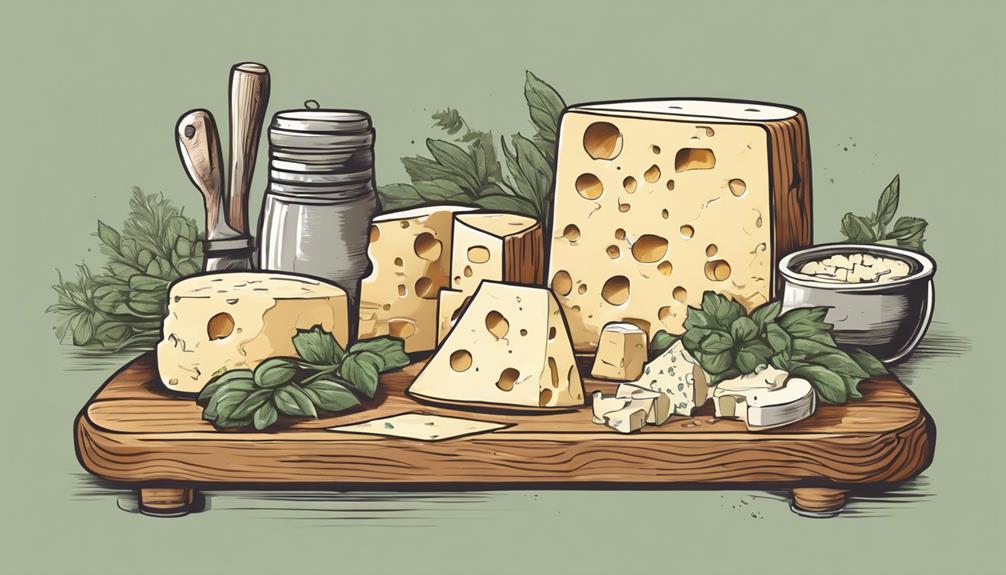How To Become More Self-Sufficient Without Starting a Full-Blown Farm…
Want to start preserving your harvest, making your own soap, or building a backyard root cellar — but not sure where to begin? “Homesteading Advice” gives you instant lifetime access to 35+ practical homesteading books on food preservation, veggie gardening, DIY natural cleaning products (save over $250 per year with this skill alone), brewing, off-grid energy, and a whole lot more…
Click Here To Check It Out Now!
“I’ve recently started making my own cheese and am fascinated by cheeses with natural rinds. I’d love to know more about the process and any tips you might have for making a cheese with a natural rind. For example, what factors should I consider to ensure the rind develops properly? I’m based in Ottawa, Canada and the climate here can be quite variable. Any advice would be greatly appreciated!” Thanks, Amanda, Ottawa, Canada.
How Do You Make A Cheese With A Natural Rind?
Hey Amanda! Natural rind cheeses are a delight both to make and to taste. The process involves allowing the cheese to develop its own protective layer, which can be quite rewarding. Let’s go through all the key steps and factors you need to consider for this amazing cheese-making journey.
Understanding Natural Rind Cheese
Natural rind cheese is one where the outer layer develops organically without any external coatings like wax or plastic. The rind forms as the cheese ages and interacts with its environment. It not only acts as a protective barrier but also contributes flavors and textures to the cheese.
1. Choosing the Right Milk
The journey to a perfect natural rind starts with the milk. Always opt for high-quality, fresh milk as it significantly impacts the final product. Here are some pointers:
- Unpasteurized raw milk is often preferred as it contains natural bacteria that help in rind formation. However, pasteurized milk works too, although it might lack some microbial diversity.
- Ensure the milk comes from healthy animals, and pay attention to their diet and living conditions, as these factors influence milk quality.
2. Culture and Rennet
Once you have your milk, the next step is to introduce cultures and rennet:
- Starter Cultures: These are specific bacteria strains used to acidify the milk, leading to curd formation. They also contribute to flavor and texture.
- Rennet: This enzyme helps in coagulating the milk, forming curds and whey.
3. Forming and Cutting the Curd
The curd must be carefully handled to achieve a good rind:
- Cutting the curd into small, uniform pieces helps in whey drainage, crucial for rind development.
- Gentle stirring after cutting ensures even moisture distribution.
4. Draining the Whey and Molding
Draining the whey properly is essential:
- Place the curds into a mold lined with cheesecloth.
- Allow gravity to aid in the whey drainage for a few hours, flipping the mold at intervals to ensure even moisture loss.
5. Salting
Salt plays multiple roles including flavor enhancement and rind formation. Two methods are commonly used:
- Dry Salting: Sprinkle salt directly onto the surface of the cheese.
- Brining: Submerge the cheese in a saltwater solution.
6. Aging Environment
The aging environment, often called a “cave,” is critical for rind development:
- Maintain a temperature between 50-55°F (10-13°C).
- Humidity should be around 80-85% to prevent the cheese from drying out.
- Good air circulation helps prevent unwanted mold growth while allowing the desired microorganisms to flourish.
7. Turning and Flipping
Regularly turning the cheese is important:
- Flip the cheese every day or two during the initial weeks of aging.
- This practice ensures even moisture and fat distribution, promoting consistent rind development.
8. Dealing with Mold
Mold is a reality in natural rind cheese-making:
- Don’t panic if you see mold. White, gray, and blue molds are typically harmless and part of the natural aging process.
- If unwanted mold appears, use a cloth dampened with saltwater or vinegar to wipe it off gently.
9. Timing and Patience
Cheese aging is a slow process, but patience is key:
- Different cheeses require different aging durations. Some natural rind cheeses are ready in a few weeks, while others may need several months or even years.
- Keep sampling small pieces periodically to monitor the development of flavor and texture.
Climate Considerations in Ottawa
Amanda, the variable climate in Ottawa can certainly pose challenges. Here are a few tailored tips:
- Temperature Control: Use a dedicated cheese fridge or a wine cooler to maintain a stable aging environment.
- Humidity Management: Humidity boxes or pans of water can help maintain the required moisture levels. Humidifiers and dehumidifiers can also be useful.
- Seasonal Adjustments: Be extra vigilant during seasonal transitions as temperature and humidity fluxes can affect rind formation.
Final Thoughts…
Amanda, thank you so much for your question! Making cheese with a natural rind is a rewarding experience that involves a symphony of factors coming together. From milk selection to climates, every detail matters. Don’t rush the process, because the magic happens slowly but surely. Good luck with your cheese-making adventure, and enjoy every step of the way!

